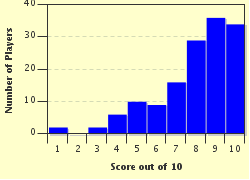Quiz Answer Key and Fun Facts
1. From the beginning of the 21st century one buzz phrase for many offices and companies has been "go paperless". Great idea but still paper is a very common substance in our every day lives. Consider the (normal) sheet of typing paper, what are the three most prevalent elements in its composition?
2. The common paradoxical phrase teaches us "a lead pencil is not lead but it is graphite". Of the following choices which BEST describes graphite?
3. Silicon dioxide (SiO2) may sound a bit imposing. This amazing compound plays a major part in the creation of a product that gives anyone the ability to see through walls and doors - with no magic involved. That is just one of its uses! From the choices below, what very common product is made of mostly silicon dioxide?
4. As with our ever changing world, even "fine jewelry" is evolving to better suit the needs of modern mankind. The element found on the periodic chart at atomic number 22 and with a symbol of Ti has proven to be an attractive, sturdy, durable and affordable choice of jewelry. Which element is it?
5. Established in 1802, the American chemical company E. I. du Pont de Nemours and Company (more commonly known as DuPont) has developed a long, long list of polymers through the years. Among those is nylon. In which target market did nylon quickly become a synonym for its finished product?
6. Elements are a part of the natural (organic) substances of everything but not all elements ARE naturally occurring. The element that is on the periodic table at number 98 is produced by way of a controlled reaction. It is labeled as the heaviest element on the earth and is named for an American state. Which element?
7. Through the years much has been learned about the toxic dangers of the element on the periodic table at number 80 with a symbol of Hg. Its uses are many and diversified yet we should be concerned about our exposure to it. Which element is it?
8. Found on the periodic table, and naturally occurring on our earth, are six elements that (each) are found in standard conditions in a gaseous form. All six are described as odorless, colorless and having very low chemical reactivity. What name is given to this group of gases?
9. Human beings, and many "higher" life forms, need the element iodine as a part of their diet. Iodine aids in the synthesizing of thyroid hormones. Having to do more with its physical appearance, though, than its purpose iodine is named (from a Greek word) for its color, which is what?
10. At atomic number 13 this metal (element) is silvery white and soft. It is known to be the third most abundant element in the earth's crust. Even with this abundant status it is said to be "100% recyclable" - good news for its many, many uses. Which element?
Source: Author
cowboybluedog
This quiz was reviewed by FunTrivia editor
rossian before going online.
Any errors found in FunTrivia content are routinely corrected through our feedback system.

